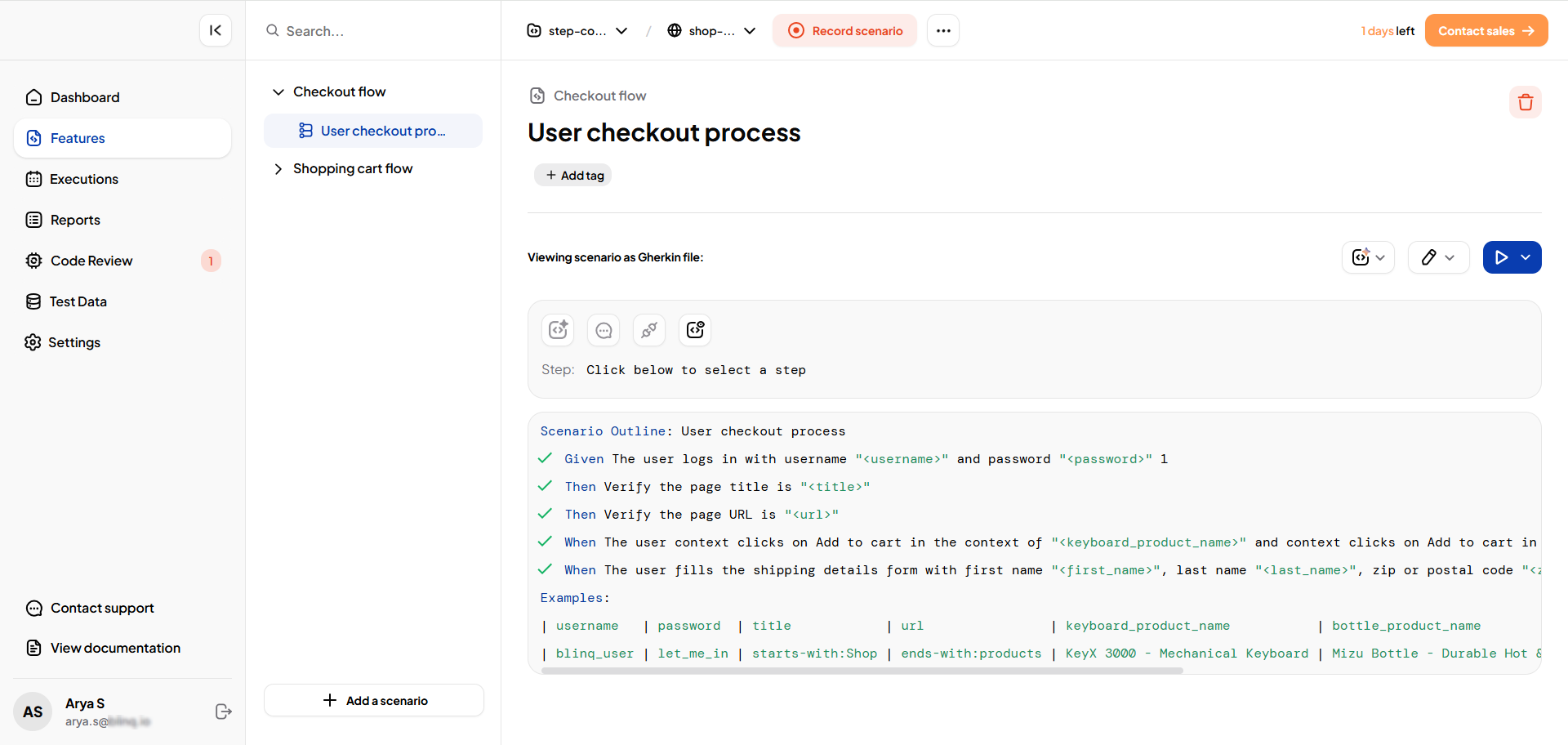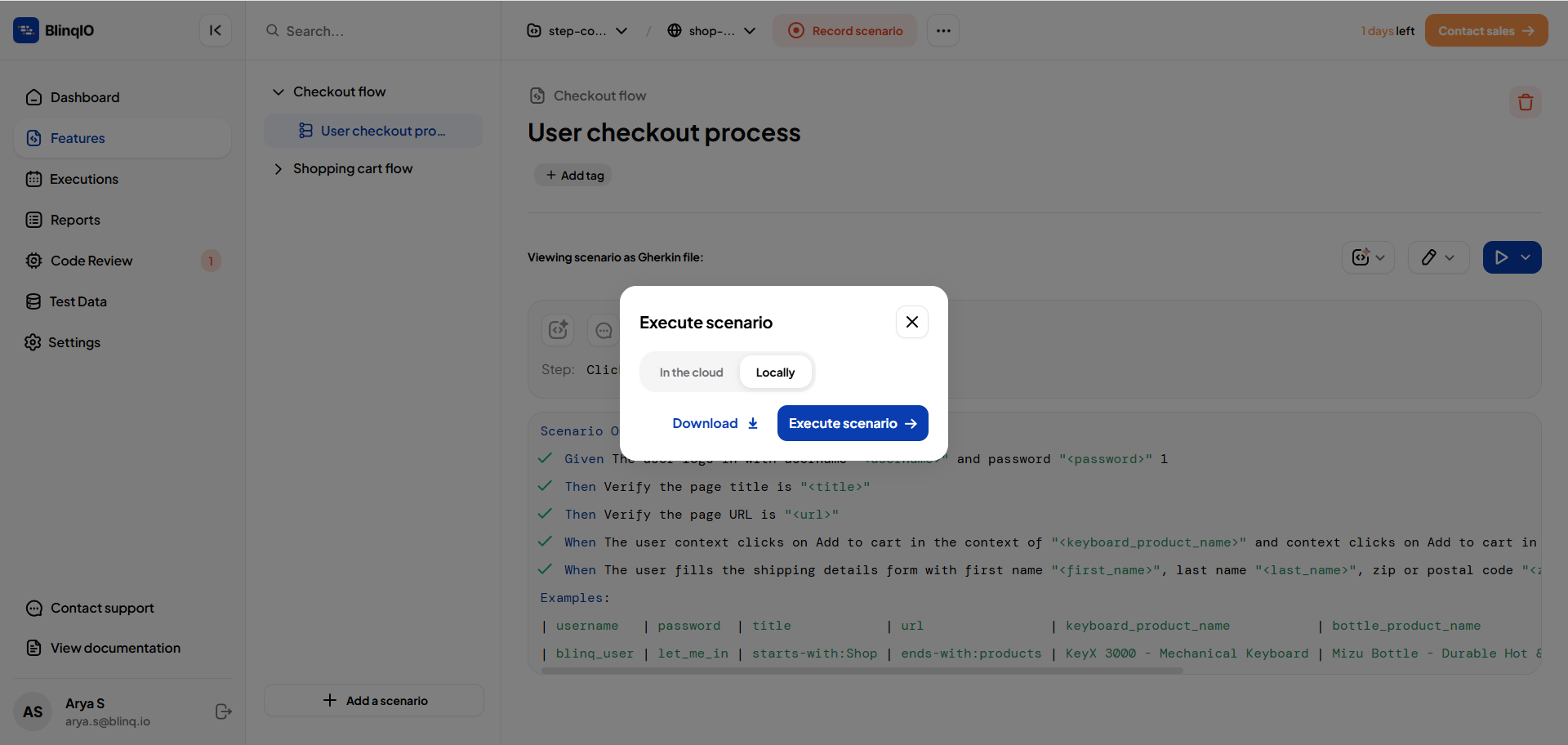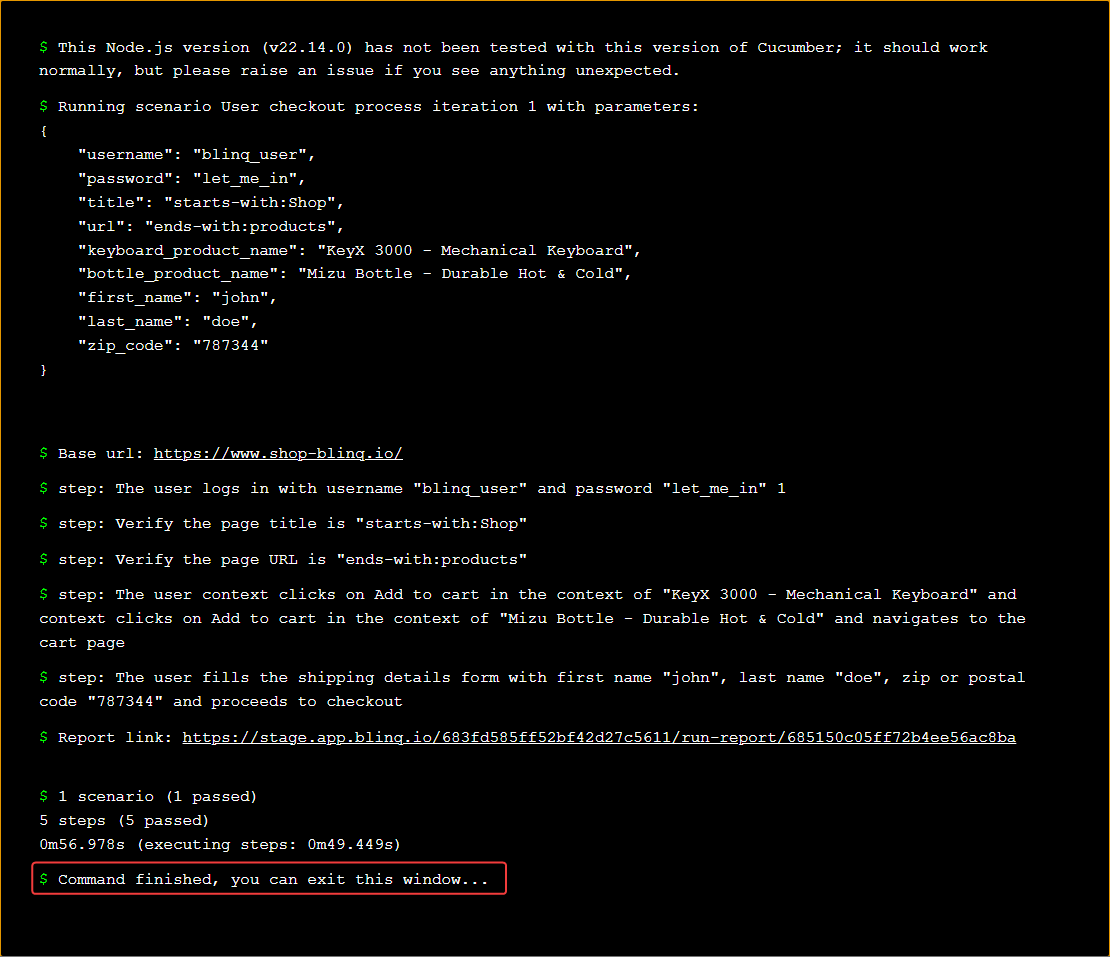Execute Tests Locally
Follow these steps to run automated tests directly on your system:
Go to the Features page and select the scenario you want to run.

Click the Execute button and select Local, then click Execute Scenario.

A new browser window opens with a terminal, and the test begins running.

At the end of the run, the BlinqIO Editor console shows:
Command finished, you can exit this window...
Execute with AI Recovery
When AI Recovery is enabled, the AI Test Engineer runs the test with AI recovery enabled.

- If a step fails, the AI Test Engineer retries the action or uses fallback locators.
- Root Cause Analysis (RCA) runs automatically for failed steps.
INFO
Learn more about Root Cause Analysis.
